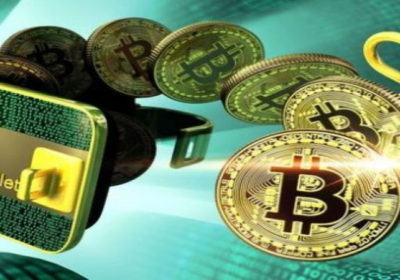
The inflationary processes that occur when a country’s economy has financial stability problems and cannot adjust or contain the prices of the goods that citizens consume lead, in almost all cases, to complicated scenarios of loss of purchasing power on the part of citizens who see how the cost of products rises, without this necessarily meaning that salaries and incomes have risen to meet the increase in these costs.
A little more expensive
In general, it is always taken into account that everything we usually acquire increases in price every year “a little”, so that the consumer price indexes that are usually published annually in most countries serve to obtain a vision of how the national economy as a whole is doing, with respect to the quality of life of the society that is governed by these parameters to manage and distribute its resources and its annual expenses. The higher the rise in prices, when there is no accompanying rise in wages and incomes, the lower the standard of living due to loss of purchasing power.
In general, central banks and financial institutions have tried to keep inflation below a percentage as close as possible to 0%, although it is not practically possible for this to be done, but it is normal for a large number of countries, for example in the OECD, the “club” of developed countries, to keep inflation control below 2% as a standard measure for all monetary and community policies which, for example, are applied from the European Union to the national economies of each member state.
In any case, why are prices rising? It is such a “silly” question that the answer seems to be obvious. They go up because the cost of raw materials and of all the links in the production and service chain that make that product end up in the hands of the consumer increases. That is fine. But that answer doesn’t answer the question either, because if raw materials go up, why do they go up? What makes it more expensive to pick up a kilo of apples and take them to the supermarket today than it was a year ago, with that kilo of apples having gone up by, say, 10 cents compared to what I paid for them exactly 12 months ago?
Market rules
Since the prices of how much it costs to produce, package, transport, transform or provide a service are arbitrary and is a dynamic governed by the law of supply and demand, it is clear, in a way, that prices go up or down depending on whether there are many people who want something or if no one wants it but we keep producing it. Therefore, as few people (or fewer people) want to buy a product, in order for the producers to still be able to place it on the market they have to lower its price and the whole chain of intermediaries must do the same if they are to reap any profit from what they are selling.
Therefore, prices always rise by a “dynamic” process of fluctuation between what we have available to be bought or served and how many people, or market, there are to sell and acquire it. This simple rule is artificially exploited by large companies, companies and businesses to play with this supply and demand, because if they see that there is little market for something, they reduce the supply, and thus balance the number of “things” for sale with the number of people who could buy it. If you want to go further and make the price go up a lot, as long as they are items that are not too perishable or that can be stored for a certain time without problems, you can reduce the supply as much as you want, thus creating a strong feeling of “scarcity” and demand and making the price go up because, suddenly, everybody wants “it” for which there is very little available.
These types of “price control methods” are known and studied by all economists, businesses and markets, so they are part of the normal functioning of the economy and how the consumerist system is structured in our society.
I refuse to buy something that is artificially expensive
Now, what would happen if consumers refuse to buy something that has artificially increased in price just because the producers refuse to put it on sale, keeping it in their warehouses until there is enough demand to be able to make much more money with those products?
It would happen that who loses out is the producing company that plays to hide what it has, saying that there is little so that we go crazy trying to get some of that “little”, but if we knew that it is a lie, that there is never “little of anything” because companies always have the possibility and availability to create more products and provide more services, then the customer could wait and say with his behavior: “until you do not bring to market that product with the fair value it has and not inflated by the artificial high demand you have created we will not buy it”. The world economy would cry out to the skies and a real revolution would take place in consumer society if this scenario were to materialize even once.
And the fact is that this situation, which would be great for the customer, would sink many current companies and businesses, which simply use this “law” continuously to produce something at a “normal” or low cost, but wait and see when there is such a high demand that they can sell that product at a very high price, and thus achieve profits with few items or units that they would not get to market many units at a lower price.
On the one hand, it is a business strategy like many others, legally valid in our system and of regular use, but, on the other hand, it is a way of playing with the consumer, a way of manipulating society that has become consolidated as “business as usual” since we are not aware of how we always lose out when the business ecosystem applies its techniques of reducing products for sale when it is interested or floods the market with them when it wants to do so.
The point is that it is the consumer who should set these rules of the game, since it is he who has the ultimate power to decide whether to buy something or not, and to do so when he needs it at the normal, reasonable and not artificially inflated price set by companies, especially at specific times of the year when everyone rushes to buy products and goods that, if you think about it, perhaps would not be needed, well thought, perhaps they would not be needed if we stop to analyze our needs at all times and resist the power of marketing and advertising campaigns, to avoid that what we buy now by impulse or social pressure ends up in a closet or storage room, but directly in the trash, soon after.
Circular economy, surplus and waste reduction
Since this behavior that we explain is going to be difficult to be really implemented in society, and since this continuous consumption of products depends on the stability, literally, of our entire civilization, because all areas of life that we can mention or think of are linked to the proper functioning of the economy, we must look at alternatives so that the process of production and consumption slows down a little the maelstrom of waste and elements that end up in landfills or incinerators, with the consequent environmental damage to the planet, and seek formulas to control part of the management of this law of supply and demand as to what happens to that which is bought but then thrown away or not used.
While the industry already has its circular economy initiatives so that more and more elements and raw materials can be recycled within the production chain, the consumer and society should find a mechanism, which already exists but is not so widespread, to recycle and give a second or third “life” to everything that is not needed.
We say that it is not something that does not exist, but we emphasize that it is underutilized. That is, in every neighborhood, city or town, in every region or in every community of neighbors, it would be extremely useful to have a center where you could donate or exchange on a regular basis everything you do not use, but that does not have to end up in the trash, but could be given to someone, through some centralized coordination mechanism, who might need it without having to buy a new one, and you could take home something that you may also need without having to buy it anyway. We know that there are many organizations, institutions and social centers that collect everything that citizens wish to donate for those who have fewer resources, but it is not enough to build a model of “circular economy” among people, beyond the models that companies already have to reduce their environmental impacts or optimize resources.
Here we propose the need for neighborhood communities or neighborhood councils to implement some kind of exchange and collaboration system so that, when we have to get rid of something that we do not use, but that is still in good working order, it does not end up in a landfill, but changes hands so that someone else can take advantage of it.
Exchange of goods at the neighborhood level
There is so much market between people so that the useful life of so many and so many non-perishable products can be expanded, that we would be surprised how much waste, plastics, utensils and others we could avoid ending up in the garbage, being used by other people who will give them a perfect and adequate use for their needs. Nobody, in this case, would do any business with it, there is no law of supply and demand in this type of social circular economic systems, and there is no inflation, nothing costs nothing, or, at least, if a price has to be put to compensate something the management costs that whoever is in charge of it may have, it will be symbolic or very adjusted to the expenses that may be of the organization of this system, but not as a means to obtain benefits from them.
The ideas to carry them out are in the society, it is a question of the organization of the communities to implement them, but it has to be always carried out on a small scale, in neighborhoods at most, because otherwise, they lose effectiveness, because if many groups, people or local regulators have to intervene, it becomes more a problem of logistics and bureaucracy than a real community of “close” people who share and exchange what they do not use for what they may need, always under a minimum supervision and control so that no one takes advantage of the system, something that can be managed if it is a neighborhood or neighborhood initiative more easily than if you try to do it at the level of a city, for example.
We encourage this type of initiative to be launched even by the municipalities themselves but implemented at the district level, for example, with local governments having minimal control of the organization but leaving the management in the hands of smaller neighborhood communities. In the end, the social circular economy can have as great an impact as the corporate and industrial circular economy, because what is recycled by the consumer has as much benefit as what can be recycled by industry, and, together, we improve the consumption model that governs our lives and take advantage to take better care of our planet and the resources it provides us with.



